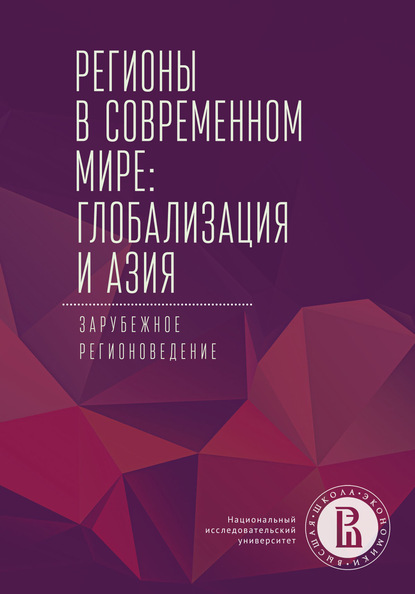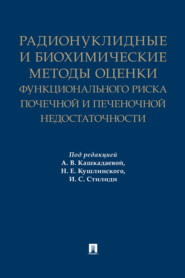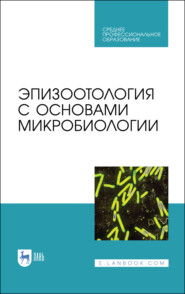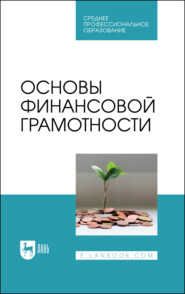По всем вопросам обращайтесь на: info@litportal.ru
(©) 2003-2024.
✖
Регионы в современном мире: глобализация и Азия. Зарубежное регионоведение
Автор
Год написания книги
2020
Настройки чтения
Размер шрифта
Высота строк
Поля
The emergence of China as a regional policy actor in the Balkans is a completely new phenomenon. China’s influence has been growing, both in economy and in politics, and initial steps have been taken to improve military relations. To date, Chinese companies have become indispensable investors, on which economic growth in the region depends, and banks are important lenders that finance the construction of some of the most important infrastructure projects. The offensive of Chinese institutions in the field of cultural diplomacy is also visible, with the expansion of scientific cooperation with research centers in the Balkans. Given that the EU and NATO have recognized China as a geopolitical challenger and Chinfluence as a threat, it is undoubted that they will use institutional mechanisms and economic leverage to attempt to limit or squeeze China out of the Balkans. From the perspective of the ten-year development of relations between China and the Balkan countries, this format has a perspective. At the same time, looking at the long-term interests of the EU and NATO, there are many challenges ahead.
Keywords: China, Balkans, Western Balkans, Chinfluence, EU, NATO.
Introduction
The emergence of China as a regional policy actor in the Balkans is a completely new phenomenon. Namely, from 1958 to 1978, China established special ties with Albania. China returned to this region 30 years later. Since 2009, China’s influence has been growing, both in economy and in politics.
The growth of Chinese influence in the Balkans has been recorded since the implementation of the ambitious Belt and Road Initiative (BRI). Intensified political contacts and first investments emerged in 2009, at the stage when the BRI was being prepared. Since 2013, we have been witnessing a kind of “eruption” [Dimitrijevic, Ping, 2017].
The Balkan Peninsula is an integral part of the European (Maritime) Route. Chinese Premier Li Keqiang “described the port of Piraeus as a pearl in the Mediterranean Sea and said it could become one of the most competitive ports of the world”[1 - Renee Maltezou. Greece seeks role as China’s gateway to Europe // Reuters, June 20, 2014. URL: https://www.reuters.com/article/greece-china-assets/update-1-greece-seeks-role-as-chinas-gateway-to-europe-idUSL6N0P14DW20140620 (date of access: 01.09.2019).]. Also, the Balkans is well connected (transport and economic ties) with Western Turkey (CAWA route) and Central Europe (NELB).
As a result, in September 2019, a direct railway connection was established via NELB from Jinan (Shandong Province) to Belgrade (Serbia)[2 - Ljudmila Cvetkovic?. Prvi teretni voz iz Kine putuje ka Srbiji // Radio Slobodna Evropa, oktobar 1, 2019. URL: https://www.slobodnaevropa.org/a/srbija-kina-teretni-voz/30193560.html (date of access: 02.10.2019).]. In this context, the initiative to modernize the Belgrade–Budapest railway should also be considered. In 2014 governments of China, Serbia, Hungary and Macedonia signed an agreement on the modernization of railroad traffic with the intention to extend the Budapest-Belgrade railway to the south towards Macedonia and Greece through a North-South vertical. Thus, the new transport corridor would connect the port in Piraeus and the most important traffic junctions of Central Europe, which are part of the NELB.
Тhe CEE (Central – Eastern Europe) region “is attractive to China thanks to its strategic geographical position for the New Silk Road project, its high-skilled yet cheap labour, and its open trade and investment environment.” [Stanzel, 2016. P. 1].
Тable 1: Land and Maritime routes – Belt and Road Initiative[3 - According to: Bala Ramasamy, Matthew Yeung, Chorthip Utoktham, Yann Duval, “Trade and trade facilitation along the Belt and Road Initiative corridors”, Working Paper Series, No. 172, Asia – Pacific Research and Training Network on Trade – UN Economic and Social Commission for Asia and the Pacific, Bangkok, 2017, pp. 9–22; Richard Ghiasy, Fei Su, Lora Saalman, The 21 st Century Maritime Silk Road: Security implications and ways forward for the European Union, Stockholm International Peace Research Institute – Friedrich Ebert Stiftung, Stockholm, 2018, pp. 4–31.]
Table 2: Chinese firms’ major construction contracts in the Western Balkans, 2010–2017 [Holzner, Schwarzhappel, 2018. P. 17]
The number of major Chinese projects contracted in the Western Balkans (shown in Table 2) “since the outbreak of the global financial crisis is non-negligible. Overall, Chinese infrastructure projects make up about USD 9.1 billion (EUR 7.8 billion). Almost 90% of these, however, have been initiated only since 2013. The most important transport sector contractor is the predominantly state-owned China Communications Construction Company. In the energy sector, the state-owned China National Machinery Industry Corporation – known as Sinomach – is the leading contractor. Geographically, the prime target of Chinese construction contracts is Serbia.” [Holzner, Schwarzhappel, 2018. P. 17]. The increased interest of Chinese investors and banks in investing in Greece is also evident (shown in Table 3).
In Bulgaria „In the realm of infrastructure, the China Machinery Engineering Corporation (CMEC) signed in 2019 a €120 million contract with the joint stock company Logistical Center-Varna for the joint development of port infrastructure in Bulgaria’s largest seaside city of Varna. This is the first project of its kind that Beijing is going to realize in Bulgaria and is part of the Belt and Road Initiative. China has also made a major investment in innovative Bulgarian business. The China-CESEE Investment Corporation Fund (a $500 million private equity fund launched in 2014 through financing provided by the Exim Bank of China) acquired a 10% share in Walltopia – a world leading Bulgarian manufacturer and installer of mounting walls. Moreover, the China National Nuclear Corporation (CNNC) has expressed interest in the construction of the Belene nuclear power plant in cooperation with Russia’s Rosatom.”[4 - Rumena Filipova. Chinese Influence in Bulgaria: Knocking on a Wide Open Door? // China Observers in Central and Eastern Europe, September 09 2019. URL: https://chinaobservers.eu/chinese-influence-in-bulgaria-knocking-on-a-wide-open-door/ (date of access: 02.10.2019.] Chinese companies are also increasingly present in Romania: „The Dutch multinational company Nidera, the largest trader in commodities for agricultural markets with operations in Romania, which was taken over in 2017 by COFCO, China; The American company Smithfield Foods, a global leader in pig farms and pork production, with a branch in Romania that manages 46 farms in the counties of Timi and Arad, which was taken over in 2013 by Shuanghui International, in the largest ever Chinese acquisition of an American company (over USD 7 billion); The famous Italian tyre maker, the world’s fifth largest, Pirelli, which was taken over in 2015 by the Chinese state conglomerate ChemChina in a USD 7.7 billion deal, including two factories in Romania”. [Pencea, 2017. P. 24]. Curiosity is the fact that China’s most modest activities have been detected in Albania. „In 2016 China’s Everbright Group bought Tirana’s N?n? Tereza International Airport Company and it has a concession on the airport until 2027. The aim is to set up a logistics centre to transport Chinese goods into Europe and to promote tourism in Albania, especially tourists from China“[5 - Anne-Marie Brady, Hiromichi Higashi. Are we real friends? Albania-China relations in the Xi Era”, Sinopsis – China in Context and Perspective, Institute of East Asian Studies at Charles University // NGO AcaMedia. Prague. 2019. URL: https://sinopsis.cz/en/are-we-real-friends-albania-china-relations-in-the-xi-era/ (date of access: 02.10.2019).].
Of course, some authors are right to state that „these projects are not FDI, but mostly public investment contracts financed by Chinese banks; not all the projects might be realised.“ [Holzner, Schwarzhappel, 2018. P. 17]. So the data presented in Tables 2. and 3. can also be deceiving.
Several major projects announced in Bulgaria and Romania have failed or have been delayed.[6 - Mario Tanev. Bulgaria’s Bulstrad files petition for bankruptcy proceedings against Litex Motors // SEENews, March 29, 2017. URL: https://seenews.com/news/bulgarias-bulstrad-files-petition-for-bankruptcy-proceedings-against-litex-motors-563353 (date of access: 10.10.2019).]
Table 3: Major Chinese Investments in Greece 2009–2017. [Bastian, 2017. Р. 10]
In Romania “The Cernavoda Nuclear Power Plant is one of the most important Romanian – Chinese projects that have not been implemented. Because of the quick succession of Romanian governments, the negotiations were delayed for more than two years. /…/ The project was estimated to cost around 6.4 billion euro (8 billion dollars).” [Popescu, Br?nza, 2018. P. 32]. A preliminary investors’ agreement has been signed in May 2019, but now, after five years of negotiations, a new problem has arisen: “The fact that the Chinese partner is under US sanctions would make this subject very politically sensitive for Nuclearelectrica“[7 - Fondul Proprietatea: Romania’s Nuclearelectrica should not invest in more nuclear units // Romania Insider, 06 September 2019. URL: https://www.romania-insider.com/fondul-proprietatea-nuclearelectrica-investment (date of access: 05.10.2019).].
In the case of Bulgaria and Romania, the reasons for the relative failure should also be sought in the EU’s membership of the two countries. „As an EU Member State Bulgaria has an access to the EU Structural Funds which provide partial grants and this makes Chinese loans less attractive.“ [Zhelev, 2018. P. 12]
However, despite some failures, it should be emphasized that China’s presence in the Balkan economies has been expanding since 2009, and especially since the launch of the BRI in 2013. Everything the Chinese have accomplished has been done in just 5–10 years.
1. Western Powers vs Chinfluence
The rapid spread of Chinese influence in the Balkans has caused both EU and US reactions. European Commissioner for Enlargement Johannes Hahn warned of the role of China in the Western Balkans and the possibility that Beijing will transform the region’s countries into Trojan horses that will one day be members of the EU[8 - Ryan Heath, Andrew Gray. Beware Chinese Trojan horses in the Balkans, EU warns // Politico, 27.07.2018. URL: https://www.politico.eu/article/johannes-hahn-beware-chinese-trojan-horses-in-the-balkans-eu-warns-enlargement-politico-podcast/ (date of access: 02.02.2019).].
„The German Foreign Minister Sigmar Gabriel appealed to EU members to pursue a common foreign policy vis-?-vis China to counter Beijing’s tactics: If we do not succeed, for example, in developing a single strategy towards China, then China will succeed and dividing Europe, he said. China is increasingly anticipated by the EU as a threat.“ [Prorokovic, 2017. P. 9]. For US analysts, the Chinese approach is clear, and therefore very problematic: „Interestingly, a comparison could be made with the United States between the two world wars and China’s promotion of the MSRI (Maritime Silk Road Initiative, as a part of BRI, remark by D. P.).“ [Blanchard, Flint, 2017. P. 235].
To a certain extent, it is unbelievable that Chinese influence is growing despite the fact that most Balkan countries are in the EU and/or NATO. The analysis of Slovenian IFIMES offers a simple explanation of this phenomenon: “European leaders have often confirmed their support to the Western Balkans and its Euro Atlantic road, expressing at the same time concerns about the impact of individual states in the region, particularly Russia, China and Turkey. The EU with its enlargement stalemate practically pushes the Western Balkans counters to Russian hug, to blame in the end those countries for their close relations and cooperation with Russia. However, some EU states always set new requirements and membership criteria for the Western Balkans. Some experts have been pointing out that 15 EU member countries would not be able to fully meet the membership criteria now, which are required from the Western Balkans countries.”[9 - Western Balkans 2019: Does the EU push the Western Balkans countries to the Russian „hug“?“ // The International Institute for Middle East and Balkan Studies, Ljubljana, October 16.2019. URL: https://www.ifimes.org/en/9706 (date of access: 20.02.2020).]
In addition, the hypocrisy or double standards of both – the EU institutions and key European countries are often visible. Germany, for example, strongly insisted on the implementation of the Third Energy Package, which essentially meant stopping the construction of the South Stream gas pipeline across the territories of Bulgaria, Serbia and Hungary[10 - „Directive 2009/72/EC of the European Parliament and of the Council of 13 July 2009 concerning common rules for the internal market in electricity and repealing Directive 2003/54/EC (Text with EEA relevance)”, Official Journal of the European Union, 14.08.2009, L211, pp. 55–92. URL: https://eur-lex.europa.eu/LexUriServ/LexUriServ.do?uri=OJ:L:2009:211:0055:0093:EN:PDF (date of access: 02.02.2019).]. But at the same time, it continued to build the North Stream and the EU did not even try to prevent it. [Prorokovic, 2018. P. 702].
Similar is the case with NATO, which is a key instrument in securing the US position in the Balkans. The US aggressive policy is based on the securitization of the Russian issue as well as the new attitude of the Donald Trump administration towards acute crises in the Middle East. In this context, the Balkan NATO members are forced to following the US, establishing a restrictive policy towards Russia and supporting Washington’s initiatives in the Middle East, which is not usually in their national interest. [Prorokovic, 2018a. P. 86–87].
2. Conclusion: Perspectives and Challenges
In contrast to the Western powers, which show a deficit of “optimistic initiatives” or constantly make political demands, the Chinese approach is different. China presents itself as an ambitious and constructive partner. And more importantly for “Balkan Stabilitocracies”, it does not require any political concessions[11 - About “Balkan Stabilitocracies” more in: Florian Bieber, „The Rise (and Fall) of Balkan Stabilitocracies“, Horizons, Issue No. 10, Winter 2018, Center for International Relations and Sustainable Development, Belgrade, URL: https://www.cirsd.org/en/horizons/horizons-winter-2018-issue-no-10/the-rise-and-fall-of-balkan-stabilitocracies (date of access: 15.01.2020).]. This is probably the reason for China’s great success. China is firmly committed to realizing the geo-economic goals of the BRI and is taking a number of initiatives in the Balkans. To some extent, it is even noticeable that „the number and intensity of China’s economic and political initiatives in the Balkans since 2013 are utterly disproportionate to the size of the markets and the foreign trade importance of these countries to China.” [Prorokovic?, 2016. P. 54–55]. Therefore, it can be concluded that China is projecting the pace and scope of its presence in the region. China has become a serious challenger to the US and EU in the Balkans. Therefore, China is an actor who will become more involved in regional political and security issues in the future.
However, the West’s advantage in the Balkans is characterized by its deep institutional presence (EU and/or NATO membership) and widespread economic ties (which are completely disproportionate, so that the export of the Balkan countries is predominantly EU oriented). Given that the EU and NATO have recognized China as a geopolitical challenger and Chinfluence as a threat, it is undoubted that they will use institutional mechanisms and economic leverage to attempt to limit or squeeze China out of the Balkans.
From the perspective of the ten-year development of relations between China and the Balkan countries, this format has a perspective. At the same time, looking at the long-term interests of the EU and NATO, there are many challenges ahead.
References
Bastian J. The potential for growth through Chinese infrastructure investments in Central and South-Eastern Europe along the ?Balkan Silk Road?. Athens // London: Report prepared by Dr Jens Bastian for the European Bank for Reconstruction and Development (with funding from the Central European Initiative), July 2017. P. 62. (in English)
Blanchard Jean-Marc F. and Colin F. The Geopolitics of China’s Maritime Silk RoadInitiative // Geopolitics, 2017. 22 (2), 2017. Р. 223–245. (in English)
Dimitrijevi?c D. and Huang Ping (Eds.). Initiatives of the ‘New Silk Road’ – Achievements and Challenges. Belgrade: Institute of International Politics and Economics, 2017. P. 529. (in English)
Ghiasy R. and Fei Su, Saalman L. The 21 st Century Maritime Silk Road: Security implications and ways forward for the European Union. Stockholm: Stockholm International Peace Research Institute – Friedrich Ebert Stiftung, 2018. P. 63. (in English)
Holzner M. and Schwarzhappel M. Infrastructure Investment in the Western Balkans, Luxembourg: European Investment Bank – Wiener Institut fu?r Internationale Wirtschaftsvergleiche, 2018. P. 38. (in English)
Pencea S. Romania-China Trade and Investment Relations Against the Backdrop of ?One Belt, One Road? Strategy // Romanian Economic and Business Review, 2017. Vol. 12, number 2. Р. 17–28. (in English)
Popescu L. and Br?nza A. Romania-China Relations. Political and Economic Challenges in the BRI Era // Romanian Journal of European Affairs, 2018. 18 (2). Р. 20–39. (in English)
Prorokovic D. China – CEE relations need new strategies // China Daily, November 27. 2017. Р. 9. (in English)
Prorokovi?c D. Geoekonomski aspekti kineske koncepcije OBOR i pozicija Srbije, Crne Gore i BiH // Nacionalni interes, 2016. XII (26), 2/2016. Р. 35–58. (in Serbian)
Prorokovi?c D. Od Soluna do Sofije: zas?to je slabio uticaj EU na Zapadnom Balkanu? In: Dragan Simic?, Dejan Milenkovic?, Dragan Z?ivojinovic? (Eds.). Evropa za mene. Beograd: Fakultet politic?kih nauka – Univerzitet u Beogradu, 2018. Р. 693–702. (in Serbian)
Prorokovi?c D. Pogled na Srbiju iz okvira evroatlantizma kao geopolitic?kog koncepta: zas?to srpski interesi nisu podudarni sa americ?kim ciljevima? // Politika nacionalne bezbednosti, 2018a. IX (14), 1/2018. P. 73–88. (in Serbian)
Ramasamy B. and Yeung M., Utoktham C., Duval Y. Trade and trade facilitation along the Belt and Road Initiative corridors // Working Paper Series, No. 172, Asia – Pacific Research and Training Network on Trade – UN Economic and Social Commission for Asia and the Pacific, Bangkok, 2017. Р. 9–22. (in English)
Stanzel A. China?s Investment in Influence: the future of 16 + 1 cooperation // China Analysis, Brussels: European Council on Foreign relations. 2016. P. 16. (in English)
Zhelev P. Bulgarian – Chinese economic relations in the context of 16+1 Cooperation // China – CEE Institute, 2018. Working paper No. 28. Р. 12–14. (in English)
Китайско-германские отношения в рамках инициативы «Один пояс, один путь»
ГАЛИМЗЯНОВА АЛЬБИНА КАРИМОВНА
преподаватель кафедры восточных языков Дипломатическая академия МИД России
Galaktika735@mail.ru
Данная статья посвящена анализу перспектив китайско-германского сотрудничества в рамках инициативы «Один пояс, один путь». Автор подчеркивает, что данная инициатива поможет укрепить глобальный характер двусторонних отношений, а также укрепить сотрудничество в финансовом секторе. Реализация инициативы «Один пояс, один путь» позволит Китаю и Германии сотрудничать в целях содействия стабильности и процветанию стран, расположенных вдоль Шелкового пути, таких как страны Центральной Азии. Инициатива способна объединить культуры и народы стран, расположенных вдоль Шелкового пути. Кроме того, к Шелковому пути примыкают нестабильные регионы, такие как Ближний Восток и Африка. Принимая во внимание, что Европа, и в частности Германия, страдает от притока мигрантов, Китай и Германия заинтересованы в достижении стабильности в регионе. В настоящее время существуют прямые грузовые рейсы между городами Германии и Китая, такими как Чунцин–Дуйсбург, Чжэнчжоу–Гамбург, Шэньян–Лейпциг, Пекин–Нюрнберг. Подчеркнуто, что Германия также поддерживает и принимает активное участие в строительстве Азиатского банка инфраструктурных инвестиций.
Ключевые слова: Китай, Германия, международные отношения, мировая политика, «Один пояс, один путь».
SINO-GERMAN COOPERATION UNDER THE FRAMEWORK OF THE «ONE BELT, ONE ROAD» INITIATIVE

















